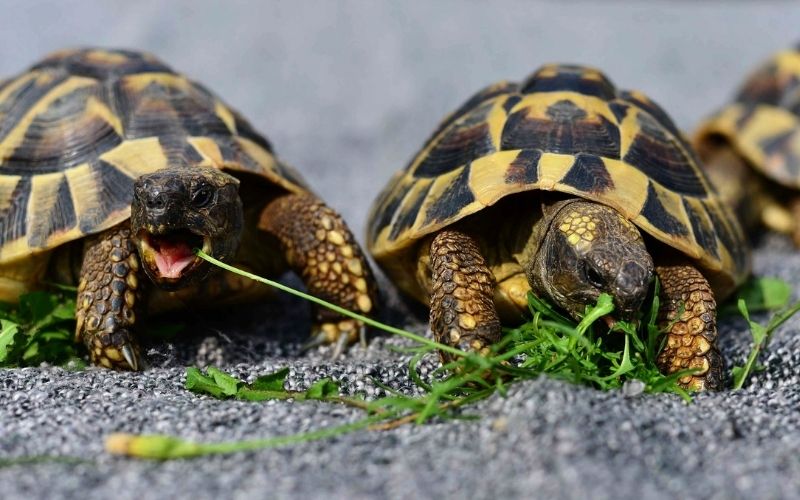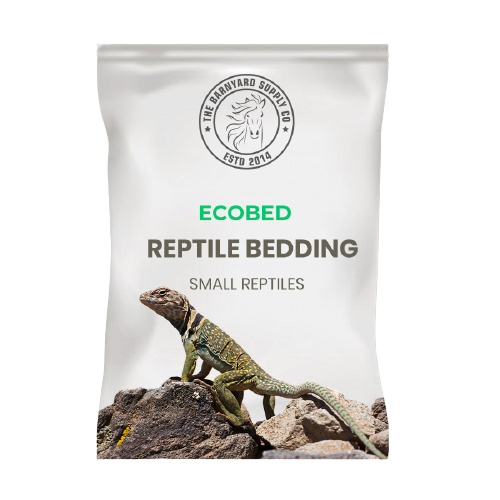Introduction
Tortoises are interesting animals that have been known to outlast their owners when properly cared for. Tortoises are, in reality, among the world’s oldest creatures!

Tortoises, on the other hand, do not live long if they are not properly cared for. Many individuals purchase tortoises without completely comprehending their care requirements, and as a result, they inadvertently decrease their lives. Here’s what you need to know if you just got a new tortoise or are thinking about acquiring one.
Are Tortoises Good Pets?
Tortoises are excellent pets…if you know what you’ve been doing!
Your tortoise may approach you for food or scratching once they feel secure and familiar with you as tortoises can feel touch on their shell! However, because they are normally reclusive and do not seek for human or tortoise company, don’t anticipate a particularly cuddly pet. However, you’re more likely to see your tortoise during the day, especially if the weather is warm and bright.

Outside of fresh water and food, tortoises don’t require much in the way of daily maintenance. You’ll probably spend more time adjusting your tortoise’s diet to meet their nutritional demands and dietary preferences than you will actually caring for them. Your tortoise may require daily enclosure cleaning depending on the layout of your cage. It’s unlikely that your tortoise would require daily cleaning if they have a big outside cage.
Interesting facts about tortoise
- Tortoises may reach a length of 10 inches.
- They are vegetarians.
- They live on land and are not swimmers like turtles.
- They’re a cold-blooded species.
- They have a life expectancy of more than 50 years.
Lighting and Heating
Your tortoise will require UV-ray-producing lights in indoor cages. This aids in the creation of vitamin D, which in turn leads to the manufacture of calcium. They also require a heat light to regulate their body temperature in a warm environment. You should have a light and a heat lamp, not just one bulb that can do both duties. The habitat should provide UV lighting in the bulk of the enclosure, but the heat should be concentrated in one area so that your tortoise may go in and out as needed.
Housing
Your tortoise’s enclosure should be as natural as possible. Adapt the enclosure to your tortoise’s species. Red-footed and Yellow-footed tortoises enjoy a tropical, humid climate, but Sulcata, Leopard, Greek, and Russian tortoises prefer a warm, dry environment. Overly wet conditions encourage fungal development, which is harmful to tortoises’ health. Provide access to shallow water for soaking and drinking for all tortoises. You can use Coconut Husk as bedding.
The enclosure’s ideal temperature range is 70-90°F (21-32°C). To enable body temperature control, a basking area and shade are required. At the cool end of the enclosure, place a shelter or hide-box. When you’re near your turtle, keep an eye on any other pets. In the winter, Russian and Greek tortoises may hibernate. Hibernation should only be done on healthy tortoises. Other sources of information about hibernation should be consulted. Tortoises such as the Leopard, Sulcata, Red-footed, and Yellow-footed do not hibernate. Indoor tortoises require at least 5% UVA/UVB light. UV output will diminish long before the light bulb burns out, thus light bulbs should be replaced every 6-9 months. Male tortoises may be aggressive and territorial when it comes to other male tortoises.
Diet
Tortoises are omnivores that require a diversified diet of fruits, vegetables, and good tortoise chow. Small quantities of animal protein can be provided. Sulcata and Leopard tortoises eat grass hay, leafy greens, vegetables, and tortoise chow, which are high in fibre. Fruit is offered sparingly or not at all, and there is no animal protein.

Leafy greens, grass hay, and vegetables should be offered to tortoises on a high-fiber, low-protein diet. Fruits are provided in little amounts or not at all. Tortoise chow can be added to the diet of Russian tortoises, but it should be limited or not provided at all to Greek tortoises. Tortoises in general appear to appreciate vividly coloured fruits and vegetables, as well as a varied diet. The nicest greens are dark and leafy: romaine lettuce, kale, collards, dandelion, mustard greens, and dandelion.
Several times a week, some specialists advocate dusting the feed with a veterinarian powdered calcium supplement. The tortoise may require more calcium than other tortoises, and some experts advocate giving them free-choice cuttlebone. Fresh food and water should be provided on a daily basis. Every other day, adult tortoises can be fed. It’s possible that they’ll be territorial and try to keep other turtles away from their food.
Handling and caring
Your tortoise is unlikely to like being carried about, so only do so when absolutely necessary. Scratches and petting, especially at feeding time, will aid in the development of trust.
The most crucial element of shell maintenance is ensuring that the diet has enough calcium. However, because shells are a component of your tortoise’s skeletal system, you should inspect it for cracks and other ailments. A veterinarian should examine any shell damage. If you have any questions or worries regarding the health of your box turtle, see a veterinarian who has expertise with exotic pets. Every 6 to 12 months, have a routine physical examination. Examination of the faeces for parasites on an annual basis. Your veterinarian may prescribe blood testing.
Substrate Nature
Your tortoise’s substrate should be absorbent so that it does not end up standing in waste. All of these materials are acceptable including coco coir, peat, and soil. If you want a chunkier substrate, reptile substrate bark and mulch, as well as coconut husk pieces, are also acceptable options. Your turtle requires green spaces in outdoor cages and will likely like dirty places as well. Make sure that any grass or weeds growing in the area will not harm your turtle if it consumes them.
Substrate Types
Coconut Husk

One of the safest and most effective reptile bedding options is coconut husks or chips. It’s a must-have because it’s soft, comfortable, absorbent, and aerated to perfection. Its absorbency keeps odours at bay, holds moisture for longer, and maintains a suitable temperature in the room. You can use it according to your requirements. Coconut bedding is non-allergenic, biodegradable, reusable, and recyclable, as well as being easy to clean and store.
Advantages:
- Very natural look
- Self-cleaning and easy cleanup of droppings
- Affordable and good value
Disadvantages:
- May attract mites and bugs over time
Wood Chips or Mulch
Wood chips or wood mulch is a common bedding item among turtle keepers. It’s generally produced from fir bark or cypress, but pine and cedar generate poisonous oils and resin, so avoid them. Because wood chips and mulch are pretty excellent at absorbing water, they’re wonderful for increasing the humidity of an enclosure, but they don’t drain effectively.
Advantages:
- Excellent for Humidity
- Absorbs Odors
- Can be Cleaned and Reused
Disadvantages:
- Can Carry Mold Spores
- Sharp Pieces can Pierce the Intestinal Walls
- Large Pieces can Cause Impaction
- Can’t be Burrowed Into
Soil
One can’t go wrong with dirt if you’re searching for a natural sleeping material. Tortoises in the wild already walk on it and dig through it, so they’re as natural as it gets. The best aspect is that it is really inexpensive. Tortoises may also readily burrow through this material without it crumbling too soon. If you want to place plants in your enclosure, soil is the finest substance for them to grow in.
Advantages:
- Cheap and Natural
- Great Moisture Retention
- Good Structural Integrity
- Can Be Mixed with Other Bedding Materials
Disadvantages:
- Will Need to be Sterilized
- Very Dusty when Dry
- Might Contain Unwanted Critters or Materials
- Strong Musty Smell




